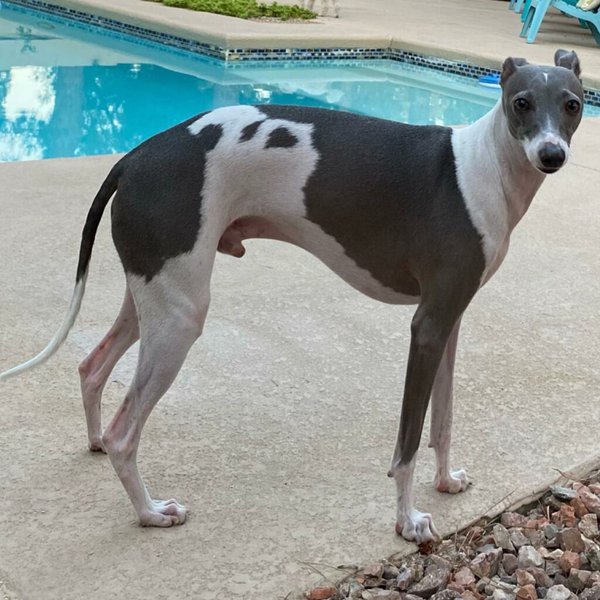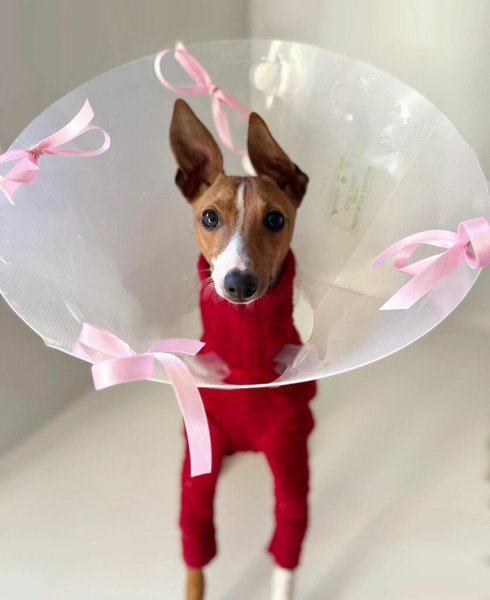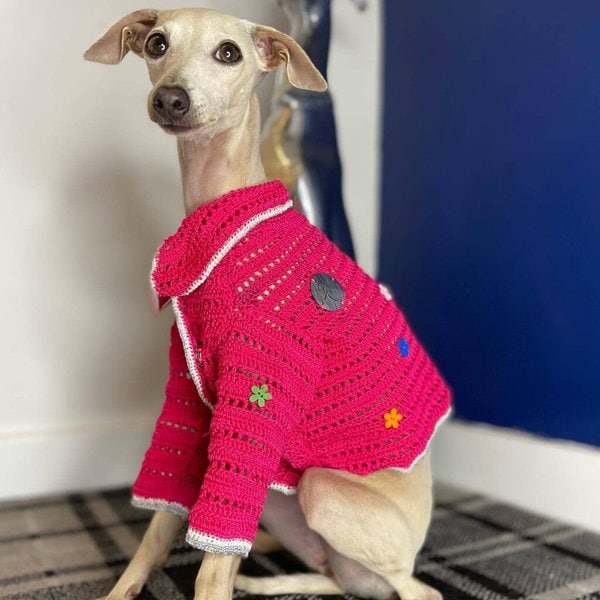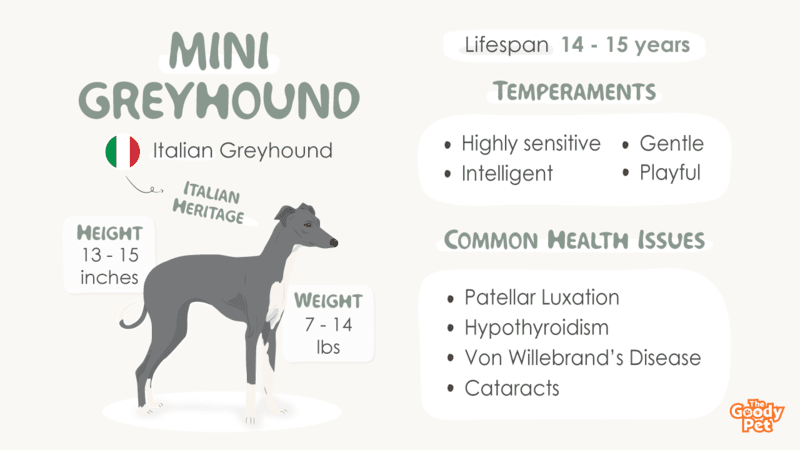With a strong resemblance to Whippets, Mini Greyhounds are, however, much smaller than them, and in fact, they turn out to be the smallest breeds among the Greyhounds. They may be small in stature but not in their physical abilities and the amazing temperaments they possess.
Miniature Greyhounds existed primarily in the Roman Empire during the Middle Ages and were the favorites of kings, queens, and noblewomen. They are devoted, highly sensitive, and smart. However, their smartness affects their compliance during training.
In this article, we will look at how long Mini Greyhounds will live and how to take good care of them. Further, we will look at the correct way to potty train this pooch and make it comply, and the recommended grooming tips for this dog breed. But before then, let’s see what other names a Miniature Greyhound goes by.
What Is A Miniature Greyhound Called?
A Miniature Greyhound can be called an Italian Greyhound due to its Italian heritage, or an Iggie for short. It is also called an Italian Sighthound due to its sight-hunting characteristics as a sighthound breed.
How Big Do Mini Greyhounds Get?
Italian Greyhounds or Mini Greyhounds are the smallest of all Greyhounds or sighthounds. It can grow up to 13 to 15 inches in height at the shoulder and weigh about 7 to 14 lbs.

Why Are Italian Greyhounds So Skinny?
Italian Greyhounds are so skinny that their owners may wonder if their furry friends are sufficiently fed. They are skinny because of the combination of their height and small weight, which give them a leaner body mass.
Physical Appearance
The most noticeable physical look of a Mini Greyhound is its overall skinny body form.
Apart from being skinny, one can distinguish the Italian Greyhounds by their abdomen. Their abdominal line runs curvy towards their hind legs, and hence, it appears convex-shaped or tucked-up.
Also, the legs of the Mini Greyhounds are very long and slender. The front legs are the most obvious of these characteristics. On standing, their front legs are erect, very skinny, and long. While their hind legs are more spaced apart and slightly muscular at the thigh.
Additional distinguishing features of the Italian Greyhound are their long necks, small heads, and well-spaced or non-floppy ears.
Coat Colors
Miniature Greyhounds often come in typical solid colors, such as black, blue, fawn, cream and red. They also come in parti-colored variations with white-colored markings on top of the aforementioned solid colors.
How Long Do Mini Greyhounds Live?
In good health, a Mini Greyhound can live for nearly 14 to 15 years.
You should expect your canine buddy to be in good health and to live up to these years. This is because Iggies are less affected by diseases generally found in most canines, and most stay healthy throughout their lives.
In fact, among all health issues that affect canines in general, hip dysplasia rarely affects Italian Greyhounds. In a research conducted by the Orthopedic Foundation For Animals between 1974 to 2010, the incidence of hip dysplasia in 147 breeds of Italian Greyhounds was zero.
However, they are sometimes affected by specific diseases solely associated with their breed. If this happens, it can make your Italian Greyhound shaky because they are falling sick.

Patellar Luxation
Patellar luxation is a congenital condition affecting small-sized dogs like Italian Greyhounds. This condition results in the misalignment of your furry friend’s hip bone and tibia when they attach to the patella.
Abnormal gaits, lameness, bowed legs, and gradual onset of arthritis are some of the indications of patellar luxation in canines. The disease also ranges from mild to severe, known as Grade I to Grade IV patellar luxation. Grade I causes lameness, while Grade IV causes bowed legs and requires surgical repair.
Hypothyroidism
Hypothyroidism is the production of a low level of thyroid hormone. Canines affected by this disorder experience obesity, sluggishness, and lethargy. They have coarse, weak fur that falls out easily and their eyes get droopy.
In females, irregular heat cycles and infertility also occur. If you suspect that your canines suffer from hypothyroidism, you should visit your veterinarian. There are medications available for managing hypothyroidism, and it requires lifelong treatment.
Von Willebrand’s Disease
Von Willebrand’s disease is the absence of a blood clotting factor in the blood of your dead buddy. When this occurs, your furry partner will have one of the following signs, such as nose bleeds, prolonged bleeding during heat cycles or injuries, bleeding after surgical procedures, and bleeding gums.
It is recommended that you visit your vet if you suspect that your Iggy has prolonged bleeding from injuries and get your furry friend tested for von Willebrand’s disease. The disease has no cure to date, but suturing and cauterization are some ways to manage it.
Cataracts
During old age, Italian Greyhounds may suffer from cataracts. When this occurs, they will have problems seeing things because their lens becomes cloudy.
You should check the eyes of your furry partner for any signs of a clouded lens. If it does occur, you should visit your vet. A cataract is treated by surgically replacing the affected lens with a clear artificial one.
How To Take Care Of Your Italian Greyhound?
Just like humans, exercise and nutrition are basic factors for taking care of your furry companion.
Exercises not only make your pooch strong, but it keeps it happy and lively all day. At the same time, the correct nutrition ensures that your canine buddy stays immune to many diseases.
Exercise Routine
Involve your Italian Greyhound in physical exercises every day for about 45 to 60 minutes. This can be in the form of playtime or walks to the parks.
Italian Greyhounds need lots of exercise. They are natural chasers of prey and are instinctively inclined to run or remain active.
Don’t take your Iggy outdoors to exercise without supervision. Whenever they see any small moving animals, they will chase them, and this can endanger their lives or result in them getting lost.
High-Quality Diet
Feed your Italian Greyhound with a healthy diet. They need it to stay sharp, resistant to diseases, and strong. A diet blessed with multivitamins will keep your canine buddy resistant to many common health problems that want to attack your furry friend.
Pet Plate is best for your Italian Greyhound. It enriches them with not only multivitamins but with the right amount of calories to remain active all day and with proteins for the growth of their body.
You should feed your Italian Greyhound at least twice every day. More meals can be added at some time during the day, but ensure not to overfed such that they become overweight in a fortnight.
When properly nourished and well fed, healthy Italian Greyhounds will have their hip bones just visible, while their ribs are not clearly visible but easily felt when being examined.
Invest In Dental Water Additives
It is a must that your Mini Greyhound has to have its teeth cleaned every day. Otherwise, plaque will quickly build up around their teeth.
Dental water additives help remove this plaque when brushing the teeth of your canine companion. It also prevents gum disease and gives your four-legged furry friends a fresh breath.
Are Italian Greyhounds Hard To Potty Train? Temperaments Of Mini Greyhounds
When training is done correctly using positive reinforcement, Italian Greyhounds are not hard to potty train. They respond to reward-based training as opposed to punishment-based treatment.
Being smart, Italian Greyhounds are not interested in having obedience commands on them, and they lose interest in potty training. Hence, patience and positive reinforcements are needed to encourage them throughout the potty training.
They are highly sensitive, and if punished, they will get stubborn and reluctant to participate in further training. However, with reward-based training, you will enjoy these gentle, playful, and intelligent canine companions.
Do Italian Greyhounds Bark A Lot?
Italian Greyhounds will only bark when there is a need to bark.
They do not exhibit any barking tendency and will only bark occasionally whenever they see a potential danger, or they want to get your attention.

Are Italian Greyhounds Good For First-Time Owners?
Yes, Italian Greyhounds are good for first-time owners, as long as they understand the needs of this dog breed well and have a lifestyle that accommodates it.
Prospective Iggie owners should understand that Italian Greyhounds only do things that they love, and this makes it difficult to train them.
The owners should also know that Iggies don’t like being left alone for more than 6 hours and that they will always prefer company. Single parents and parents without children will find Italian Greyhounds suitable.
Are Italian Greyhounds High-Maintenance? Grooming Tips For Mini Greyhounds
No, Italian Greyhounds are not high-maintenance. They just require care that is very easy to follow routinely.
The grooming tips we recommend for your Iggies are simple. You should brush their teeth once a day, cut their nails once a week, and clean their ears once a month. Mini Greyhounds are playful and occasionally they get stained or dirty after playing or exercising.
When they do get stained, you will need shampoo to bathe them. Bathing with shampoos, for example, Pro Pet Works All Natural 5 in 1 Oatmeal Shampoo removes the stains and makes the fur cleaning process very easy. And the result is clean-looking and attractive fur.
Otherwise, they just require simple cleaning with a baby wiper when no stain is eminent on their furs.
How Much Do Italian Greyhounds Shed?
Iggies shed very little all year round, and their shedding may be unnoticeable. During shedding seasons, such as spring and fall, these dogs still shed little.
They have a short and smooth topcoat without any undercoat, unlike most canines. Most pooches have double coats, the topcoat and the undercoat. It’s for this reason that Iggies shed very little amount.
Although you wouldn’t need to trim their coats very frequently, you will still need to brush their fur when it gets dusty. FURminator Undercoat Tool is best for brushing the hairs of your furry companion. It runs without noise and moves softly around the skin of your canine buddy, ensuring that every dirt and dust trapped around their hairs is removed.
Are Italian Greyhounds Hypoallergenic?
Yes, Italian Greyhounds are considered to be hypoallergenic since they do not shed much.
This makes them recommended and suitable for allergy sufferers and for those who don’t like furs around their homes.
Related Questions
How Much Does A Miniature Greyhound Cost? With an average price of $1,400, you can get your own Italian Greyhound. The cost of an Italian Greyhound ranges from $1,200 to $2,000 depending on the location of the breeder and the conditions of the Italian Greyhound, such as age, coat colors, and overall health status.
Are Italian Greyhounds And Whippets The Same? No, Italian Greyhounds and Whippets are not the same. Iggies belong to the toy groups, whereas Whippets belong to the hound group. Nevertheless, they share similar characteristics as both are sighthounds and will instinctively chase prey on sight.
How Fast Do Italian Greyhounds Run? Being natural chasers of prey, Italian Greyhounds are fast runners, running as fast as 25 mph. Some Iggies can attain a maximum speed of approximately 28 mph. It’s for this reason that Italian Greyhounds, one of the fastest dog breeds, are used in dog racing games.





